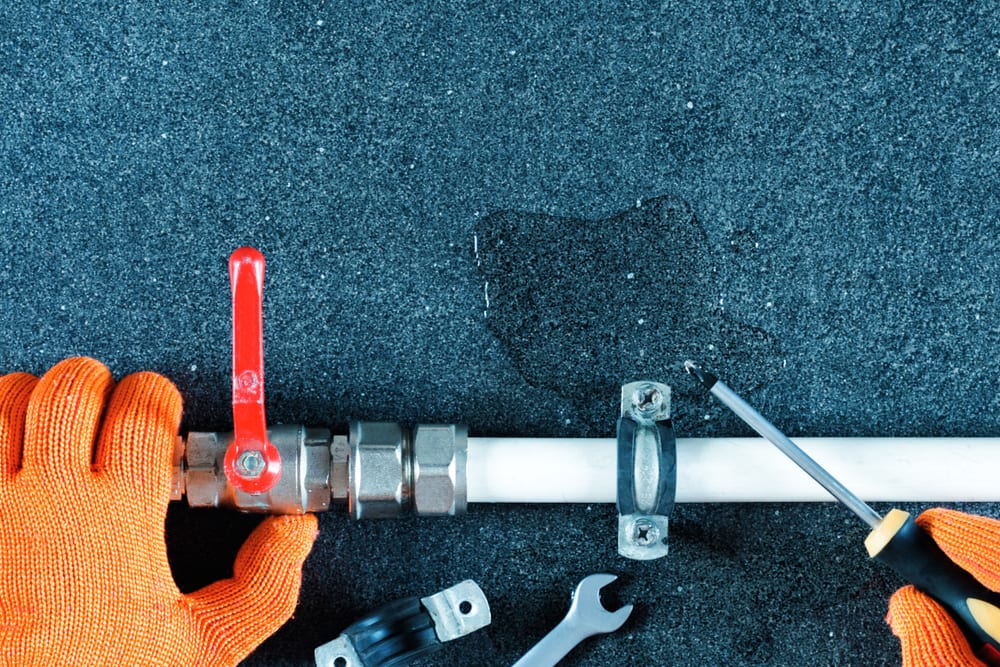Every person may have their own individual thinking with regards to Finding hidden leaks.
.jpg)
Early discovery of dripping water lines can mitigate a potential disaster. Apart from saving you cash, it will certainly minimize the aggravation and disappointment. The minute you find a leak, calling your plumber for repair services is the best remedy. Nevertheless, some little water leakages might not be visible. Below are some hacks that aid if you can not find it with your nude eyes.
1. Take A Look At the Water Meter
Every house has a water meter. Checking it is a proven manner in which assists you discover leakages. For starters, switch off all the water resources. Guarantee no one will certainly flush, use the faucet, shower, run the washing device or dishwashing machine. From there, go to the meter and watch if it will certainly alter. Since no one is utilizing it, there need to be no movements. If it relocates, that indicates a fast-moving leak. If you discover no modifications, wait an hour or 2 and examine back once again. This means you may have a slow-moving leak that can even be below ground.
2. Inspect Water Consumption
Examine your water bills and also track your water intake. As the one paying it, you should observe if there are any kind of disparities. If you find sudden changes, regardless of your consumption being the same, it implies that you have leaks in your plumbing system. Remember, your water costs need to fall under the same variety monthly. An abrupt spike in your costs shows a fast-moving leak.
On the other hand, a steady increase each month, even with the exact same practices, reveals you have a slow-moving leak that's likewise gradually intensifying. Call a plumber to extensively examine your home, especially if you really feel a cozy location on your flooring with piping underneath.
3. Do a Food Coloring Examination
When it pertains to water usage, 30% originates from commodes. Examination to see if they are running effectively. Decline flecks of food color in the storage tank as well as wait 10 mins. There's a leak in between the container and also dish if the color somehow infiltrates your bowl during that time without flushing.
4. Asses Exterior Lines
Do not neglect to inspect your outdoor water lines also. Test faucets by connecting a yard hose pipe. Should water leak out of the connection, you have a loose rubber gasket. Change this and make certain all links are tight. It will certainly assist get it skillfully analyzed and preserved yearly if you've got a lawn sprinkler system. One little leak can squander lots of water as well as spike your water expense.
5. Check and also Examine the Scenario
Home owners should make it a routine to examine under the sink counters and also even inside cabinets for any type of bad odor or mold and mildew development. These two red flags suggest a leakage so prompt attention is needed. Doing regular evaluations, even bi-annually, can save you from a major problem.
Inspect for stainings and compromising as a lot of pipelines as well as devices have a life expectations. If you suspect dripping water lines in your plumbing system, don't wait for it to intensify.
Early discovery of leaking water lines can minimize a possible calamity. Some little water leakages might not be visible. Examining it is a guaranteed method that helps you discover leakages. One small leak can throw away bunches of water and also surge your water bill.
If you suspect leaking water lines in your plumbing system, do not wait for it to intensify.
WARNING SIGNS OF WATER LEAKAGE BEHIND THE WALL
PERSISTENT MUSTY ODORS
As water slowly drips from a leaky pipe inside the wall, flooring and sheetrock stay damp and develop an odor similar to wet cardboard. It generates a musty smell that can help you find hidden leaks.
MOLD IN UNUSUAL AREAS
Mold usually grows in wet areas like kitchens, baths and laundry rooms. If you spot the stuff on walls or baseboards in other rooms of the house, it’s a good indicator of undetected water leaks.
STAINS THAT GROW
When mold thrives around a leaky pipe, it sometimes takes hold on the inside surface of the affected wall. A growing stain on otherwise clean sheetrock is often your sign of a hidden plumbing problem.
PEELING OR BUBBLING WALLPAPER / PAINT
This clue is easy to miss in rooms that don’t get much use. When you see wallpaper separating along seams or paint bubbling or flaking off the wall, blame sheetrock that stays wet because of an undetected leak.
BUCKLED CEILINGS AND STAINED FLOORS
If ceilings or floors in bathrooms, kitchens or laundry areas develop structural problems, don’t rule out constant damp inside the walls. Wet sheetrock can affect adjacent framing, flooring and ceilings.
https://www.servicemasterbyzaba.com/blog/how-to-detect-water-leakage-in-walls/

Hopefully you enjoyed reading our section on Detecting hidden plumbing leaks. Thanks so much for spending some time to read through our short article. Do you know somebody else who is fascinated about the topic? Feel free to share it. I love reading our article about Detecting hidden plumbing leaks.